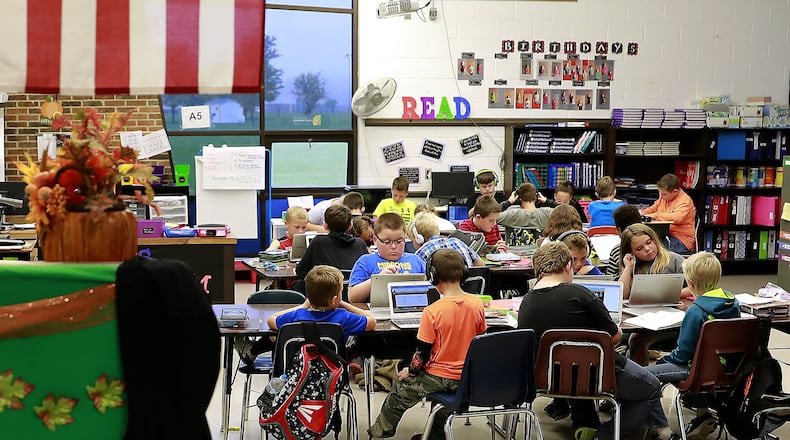The state would put an additional $400 million towards school funding in Fiscal Year 2020 under the proposed plan.
MORE: Bipartisan plan seeks new school funding system for Ohio
The plan also would fund charter school and voucher school students directly, rather than having the funding pass through local school districts.
“Fair School Funding works for Ohio’s students, educators, taxpayers and economic future. It’s based on what it actually cost to educate students, what taxpayers can afford and what local school districts determine will work in their communities,” Cupp said.
Springfield City School District Superintendent Robert Hill said he is encouraged by the plan, under which Springfield would receive an additional $355,906 in funding.
“At this time, I am encouraged by Governor DeWine’s focus and commitment to public school districts, such as Springfield, that have an extremely high percentage of students living at or below the federal poverty level,” Hill said. “It is my hope that the state budget will eventually begin to provide early learning opportunities for all students through fully funded preschool programming, which assists in preparing students with the necessary learning foundations to enable them to be future ready.”
Hill said the district will continue monitoring the funding process closely.
LOCAL: Clark County man accused of beating woman who tried to stop attack neighbor
Another district closely monitoring the process is Graham, the only one in the area that would not receive additional funding.
“What’s important to remember about this proposal is that no matter what happens, it will be a few years before we see any changes within the school districts,” said Kirk Koennecke, Graham superintendent. “This plan isn’t a quick fix.”
Koennecke said it’s also important to remember that Friday’s proposal is only a simulation.
“These numbers don’t take into account for things like transportation or special education,” Koennecke said. “I appreciate the effort that the representatives are making to fix problems within the state school system. I look forward to seeing how this all shakes out.”
The proposal calls for:
— establishing how much it costs to educate the average student in a typical school district;
— determining the best teacher:student ratio for each grade level;
— funding high quality preschool for all economically disadvantaged 4-year olds;
— providing a technology device for each student;
— determining the local share of funding based on the community’s property wealth and income;
— providing additional state funding of $422 per student living in poverty, up from the $272; and
— increasing fund for special education students.
The plan is the result of 15 months of bipartisan work with educators, legislators and school finance experts.
LOCAL: Man in custody after summer dog attack that hurt 6-year-old
Ohio’s current school funding system relies on a combination of local property and income taxes, state money, lottery profits and federal funds. How much state funding a district receives is based primarily on student enrollment and property wealth of a district, according to the Ohio Department of Education.
Higher-wealth districts get less state aid, while poorer districts depend heavily on state funding.
Cupp said in a statement that a new formula is needed because the majority of school districts currently receive either more or less money than the existing formula prescribes.
“The current formula doesn’t apply to 82 percent of Ohio school districts,” Cupp said. “The new formula works for over 85 percent of the districts. No district will lose money. And yes, the plan meets the test of Ohio’s Constitution with respect to the DeRolph decisions.”
The proposal is now in the hands of lawmakers, who will decide whether it will make it’s way into the state’s budget, which is currently pending in the Ohio House of Representatives.
SPRINGFIELD NEWS-SUN
The Springfield News-Sun is commmitted to providing coverage of statewide issues and how they affect Clark and Champaign county residents.
Estimated increases in school funding from 2019 to 2020:
Tecumseh: $731,917
Springfield: $355,906
Urbana: $606,758
Triad: $343,701
Clark-Shawnee: $549,234
Source: Fair School Funding Plan
About the Author
